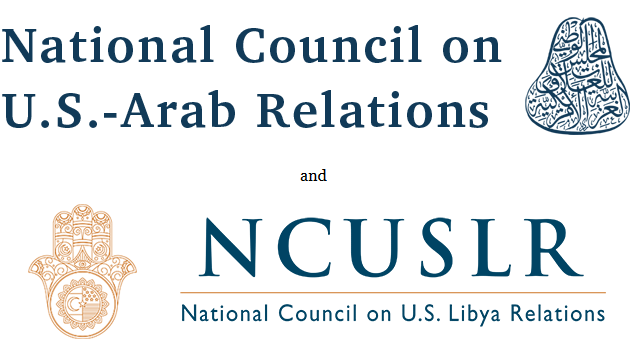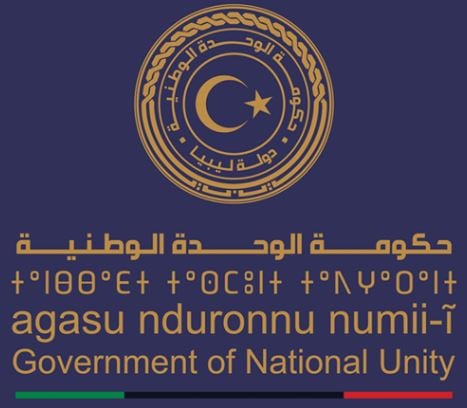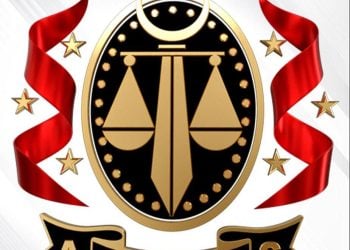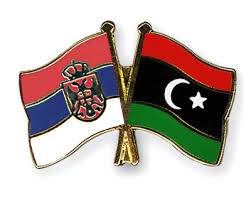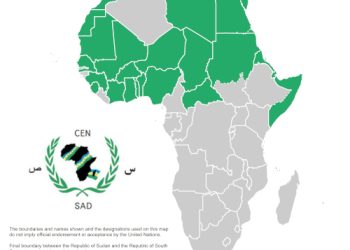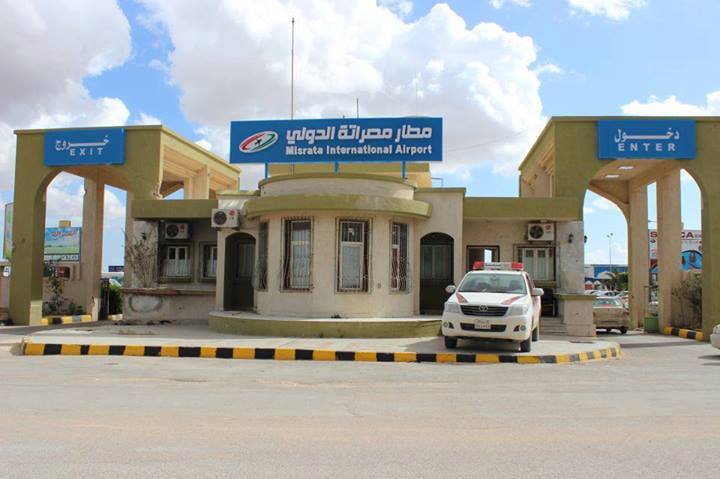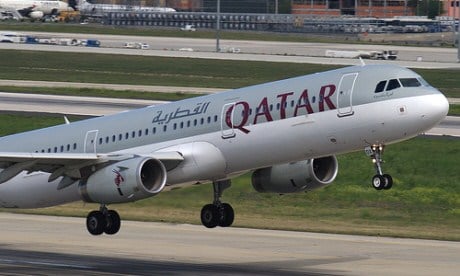By Libya Herald reporter.

London, 14 September 2017:
The National Council on U.S.-Libya Relations (NCUSLR) recently completed a visit to eastern Libya and issued the following report on its visit:
The National Council on U.S.-Libya Relations (NCUSLR) has committed itself to visiting and reporting on various regions of Libya in order to better inform Americans of the evolving status of Libya. We believe that direct, unimpeded exposure is the best way to provide accurate information about the situation in Libya from all aspects.
On the first of several planned trips to various regions of conflict-ridden Libya, NCUSLR board members Hani Shennib and Wolfgang Pusztai, along with Advisory Board member Michael Guidry, completed a field assessment of Benghazi and parts of the eastern region, historically known as Cyrenaica.
During their visit to the East, they discussed the region’s post-conflict challenges and urgent needs with government officials, medical professionals, educators, and students. The overall impression of both the densely populated cities of Benghazi, Albaida, Almarj, and the smaller towns between them, is that they are safe and business is being conducted with minimal hindrance.
At the same time, the NCUSLR is aware of the besiegement of the city of Derna by the Libyan National Army (LNA) and the ongoing efforts to resolve the standoff with the Derna Shura Council.
Benghazi
Benghazi, a city of approximately 900,000 inhabitants, and, until 1969, the twin constitutional capital city of Libya, was recently declared “liberated from Daesh” by the LNA. During our stay in the city, we witnessed the return to normal life in its streets. Security concerns did not appear to impact how people went on with their lives, even though we did hear of incidents of kidnapping.
With the exception of two blocks in the central district of Khreibish, where 50-55 jihadists of the “Benghazi Revolutionary Shura Council” (BRSC) were encircled by the LNA, the city was open and accessible. Unquestionably, the city of Benghazi has suffered tremendously during its war against terrorism. The toll of three years of war is evident by the extensive damage to buildings and infrastructure, including massive destruction utility systems – electricity, water, and sewage – and commercial, residential, and government buildings (i.e. – police stations).
Surprisingly, main roads were relatively well preserved and the team was able to complete a comprehensive tour of the city from the area around Benina airport through the neighborhoods of Bo Atni, Alleithy, Alhawari, Alfouihat, al Gawarshah, the University, Gelianah, Aldabra, and the city center.
We met with the Mayor of Benghazi, Abdulrahman Alabar, members from the Benghazi Chamber of Commerce, Libyan NGOs, and others involved in various projects aimed at reconstruction of the city and returning it to a more habitable and functional state. Teams from municipal offices, UNSMIL’s office in Benghazi, and local businessmen, have proposed several projects to the United Nations Development Program (UNDP) and the European Council.
Mines: A Deadly Menace in Benghazi
Despite the appearance of tranquility and the return of most Benghazi residents to their homes, mines and booby traps planted by retreating terrorists continue to cause significant loss of life and injuries. Disarmament of these mines presents an insidious danger and daunting challenge.
Self-taught, inadequately equipped, inexperienced Benghazi volunteers defuse mines with screwdrivers and knives. They take on this extremely dangerous, but essential, responsibility, despite the lack of training, modern instruments, and protective gear. Although the fighting has ended, civilian and military casualties persist due to the mines. This has also slowed down the process of securing neighborhoods previously occupied by terrorists.
Mayor of Benghazi Abdulrahman Alabar pled for help in clearing the city of mines that cause daily loss of life and limb for Benghazi residents. NGOs working to increase public awareness about the mines presented a documentary on the lack of acceptable tools for de-mining. There is a clear and urgent need for international assistance in this regard.
Healthcare Crisis
The NCUSLR team visited numerous hospitals in Benghazi, met with staff and patients, and discussed the extent of healthcare crisis. The serious shortage of supplies is compounded by the shortage of foreign healthcare providers who left their hospital positions during the war or were forced to leave because their salaries were unpaid due to lack of funding from the central government.
At Kuweifiah Chest Hospital, doctors shared horror stories of doing surgery on TB-infected patients without appropriate masks. They also cited shortages in basic stains and diagnostic tests to confirm types of bacteria and the interruption of anti-microbial medications needed to treat and prevent recurrence of TB in vulnerable populations, such as Tawerga migrants in Benghazi and Sub Saharan refugees.
Patients from Benghazi Medical Center awaiting treatments stated that expensive anti-cancer and immunotherapy medications are either nonexistent or only available in limited supply in the city of Misrata. They expressed frustration that patients from all over the country must travel to Misrata and may or may not be offered medications based on residency. Emergency rooms are void of basic radiological and other diagnostic tools and there are no resuscitation, monitoring, or trauma kits to provide initial basic care.
Patients often have to circulate around pharmacies in the city looking for basic medicines, which they then bring back to the only semi-functioning tertiary care hospital in the city. At this hospital, an entire floor of one out of three functioning towers is dedicated to caring for war injuries. Funds for caring for seriously injured Libyan army soldiers are lacking, while Benghazi families watch BRSC fighters be taken care of by locally deployed Italian mobile hospitals and at Turkish hospitals in Istanbul.
Such disparity in providing needed medical care increases anger among Cyrenaican families and impedes conflict resolution. A visit to the Hospital for Communicable Diseases exposed serious shortages and disruptions of basic modalities of management of young adults infected with HIV, some with full-blown AIDS. Agreements made between Libya and European governments in 2000 for their care have not been sustained and since 2014, none of the European obligations have been kept.
With the to a large extent cessation of payment of budget shares for health in eastern Libya by the GNA in 2016, there has been a collapse of quality and quantity of care at the hospital. Mortality rates of the HIV-infected young adults have risen to unacceptable levels. The disruption of funding for medicines and diagnostic tests due to the misconduct of politicians has led to the overall deterioration of healthcare establishments in the East and possibly other regions.
Education
The NCUSLR team visited the University of Benghazi, which ranked high in Libya and North Africa, meeting with Deans of five faculties, professors, and students. The amount of devastation caused by the jihadists on the campus was disheartening. Not a single building was spared; some areas were totally demolished. Groups of students were volunteering to repair, reconstruct, and clean the campus to make it possible for school to open on time in mid-September.
Some departments have not had classes for a couple of years and have had to delay graduation. In conversations with faculty and students, we discussed means of collaboration with American and other international universities and academic institutions. We were asked to reach out on their behalf and to call upon their colleagues from American, European, and other universities to help in any and every possible way.
Primary and secondary schools did not fare better and the destruction of many buildings have led to the need to compromise teaching hours in functioning schools and to create three teaching shifts to allow for education of displaced pupils.
Meeting with Field Marshal Khalifa Heftar
As we walked onto the military base where Field Marshal Heftar received us, we observed discipline and a strong sense of loyalty and gratitude among the soldiers and officers. “You saw how Benghazi was terrorized in 2014. There was not a day in which heads were not cut and en mass assassinations of political activists, judges, army, and police officers were taking place in Benghazi. It was an orchestrated plan to void the city from all who could resist a plot to turn Benghazi and Libya to an Islamic caliphate rather than a modern civil state”.
Heftar stated that the “Libyan Army now controls 80% of Libyan soil and has succeeded in gaining [the] upper hand with little help from friends and hindrance from the west. He says he continues to be puzzled by the unexpected pro-terrorist position of the United States prior administration and hopes that the Trump administration will now see how the Libyan people and the army have resisted turning the country into a terrorist haven and that the new administration will now support the army in completing its mission of liberating the whole country.”
Clearly many Libyans, particularly those who have left Benghazi and side with Islamist fighters, do not share this view. Regardless of these conflicting political views, Benghazi today appears relatively stable. Heftar and Mayor Elabbar were keen to show that the city is now safe and ready for business. They both highlighted the enormous task ahead in reconstruction and pleaded for governments and organizations to visit the city and step in to assist Benghazi and the East, which, together with Sirte, suffered the most during the war against terrorism. Both men emphasized economic development as the essential tool to prevent youth marginalization and alignment with destructive extremist ideology.
During our visit to Benghazi Town Hall, Mayor Elabbar remarked, “the world watched as terrorism went rampaging people’s lives – hundreds of assassinations and thousands of kidnappings. The United States and Europe let Benghazi down and succumbed to misinformation transmitted to them by effective Muslim Brotherhood lobbying groups. We need Americans to visit [Benghazi] and see at close range the destruction of our city and disruption of our citizens’ daily lives as a result of the cruelty of terrorists who tried to turn Benghazi to another Islamic Khalifah”.
The Interim Government
During the trip, there were numerous meetings with ministers in the Interim Government appointed in 2014 by the House of Representatives. The Interim Government is recognized in eastern Libya and parts of the south and west, but not any more internationally. Minister of Foreign Affairs Mohamed Eldayri shared his views of the complexity of the Libyan crisis. Eldayri explained the difficulties caused by the misinformation presented to foreign countries by diplomats representing only the United Nations-appointed head of the Presidential Council, Fayez al-Sarraj, who is now very unpopular in Libya. Eldayri raised concerns about the failure of the Skhirat agreement and its unworkable agenda.
Interim Government Minister of Health Reida El-Oakley shared his frustration with the serious shortages of medical supplies and staff across the country but predominantly in the East, South, and Jabal regions. He warned that if the shortage of medications is not addressed, the Libyan population runs imminent risk of epidemics of resistant tuberculosis, typhoid, malaria, and other diseases. Shortages of anti-tuberculosis medications present the dangerous risk of emergent resistant strains of microbacteria spreading not only through Libya and North Africa, but also to the European continent.
Message from Benghazi and the East of Libya
Libyans from the East, and in particular from Benghazi, which took the brunt of destruction during the last three years, wanted to send a message to the world and especially to Americans, a message of pride and confidence in their ability to defeat terrorism and rebuild their lives and cities again. They implore the United States and Europe to consider a more objective and realistic political position towards Benghazi and the East. They invite Americans, Europeans, and others to visit them and see first hand the miracle of liberating Benghazi.
They are reaching out to the world to actively engage and help Libyans rebuild Benghazi and return it to its glorious days prior to 1969 when Gadhafi nullified the Libyan constitution, marginalized the city, and punished its people. Benghazi’s universities, institutions, local government, and people need help. Eastern Libyans today are suspicious of any Islamic movement or party and seem to demonize the Muslim Brotherhood as another devious party with a cunning ploy to get to power before reverting to its hidden agenda of forming an Islamic state.
They view al-Sarraj as controlled by the Islamist parties and militias who control Tripoli, Libyan oil revenue, and the Central Bank. Such unproven accusations are accentuated by the withholding of funds by the GNA to the East. Repair and reconstruction efforts in Benghazi are moving slowly with little to no funds received from the Central Bank in Tripoli. Many civil servants who work in government and national corporations have not been paid for up to twenty months and soldiers earn next to nothing.
This lack of funding is perceived by many in the East to be intentional and to have the objective of subjugating the East to the authority and political influence of al-Sarraj. Al-Sarraj and his government were rejected by most of Eastern Libyans with whom we spoke. While subjectively it appears that most of people who we interviewed would prefer a negotiated resolution to remedy the disparity and injustice felt in the East, we were told these attempts of subjugation and its negative impact on the local economy could only lead to more resentment of the central Tripoli based government and an escalating demand for independent governance in Cyrenaica.
In general, and despite potential for interview bias, we heard numerous calls by many Cyrenaicans for a return to the 1951 constitution of federal states and/or the 1963 constitution, which calls for Benghazi and Tripoli to be twin capitals. Some also supported the return of a monarchy while others did not. In conclusion, one recognizes a pattern of suspicion and lack of trust of the Presidential Council and GNA in the East. Despite a sense of relative calm and security in the city of Benghazi, there continues to be major challenges attributed to lack of funding and resources needed to better secure the city and its people. There is unfortunately an almost complete dissociation of the governing processes between Cyrenaica and Tripoli today.
The city of Benghazi desperately needs help. Consideration should be given to well-thought and designed bottom-up reconstruction projects by “Friends of Libya.” Inertia in supporting basic needs of the city today would most likely lead to socioeconomic chaos and further worsening of its basic human security needs. Empowering the people of Libya to lead normal daily lives is key to their active positive involvement in nation building efforts.
The views in this report represent those of its authors


